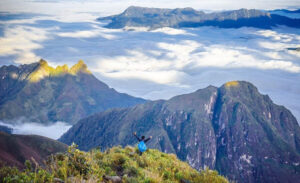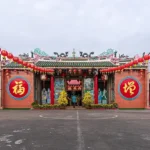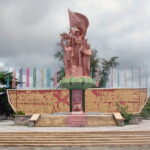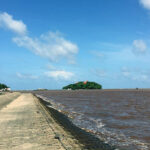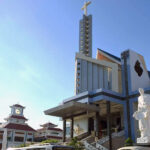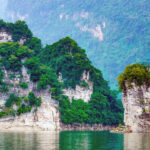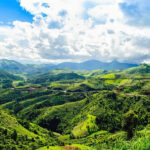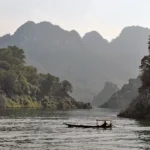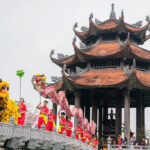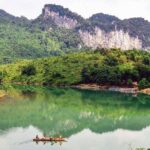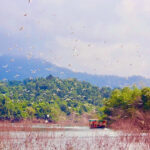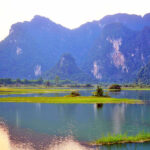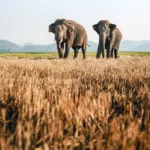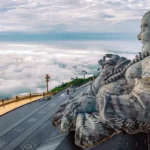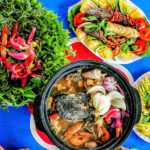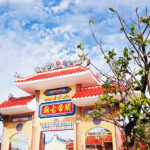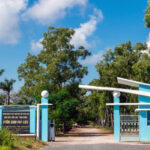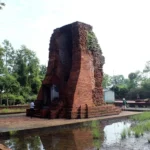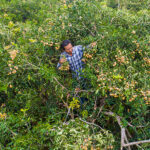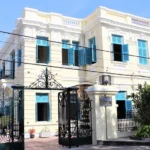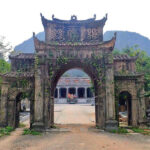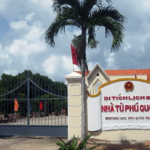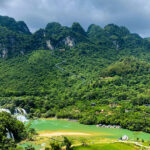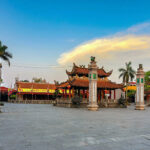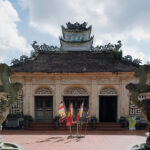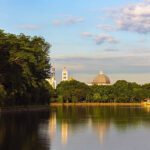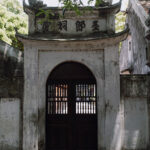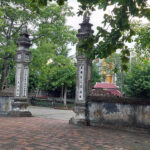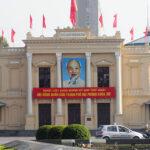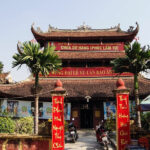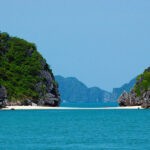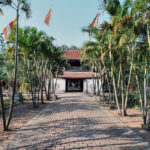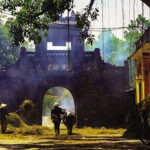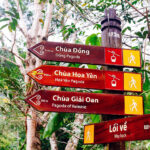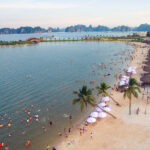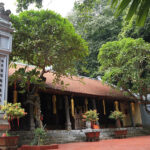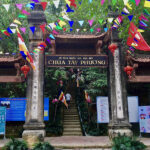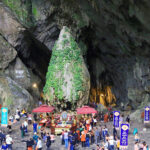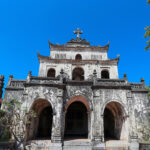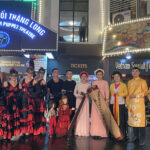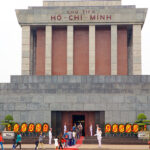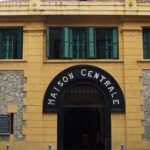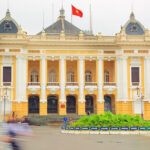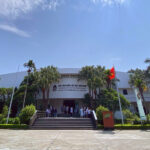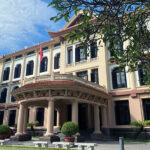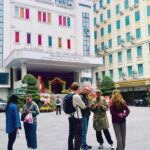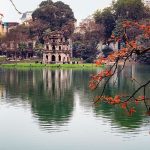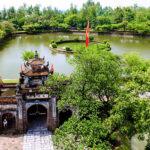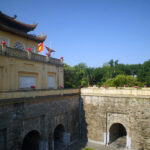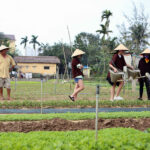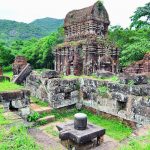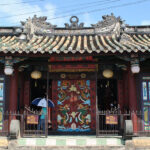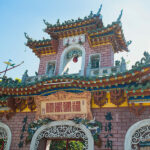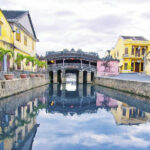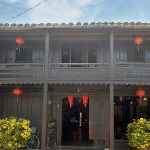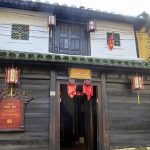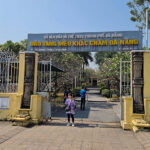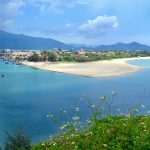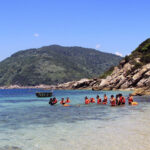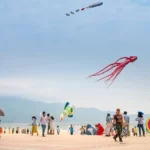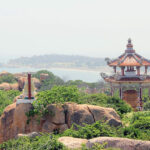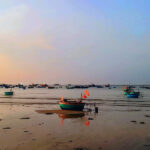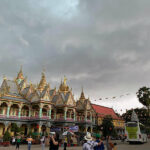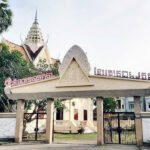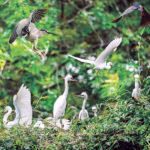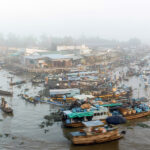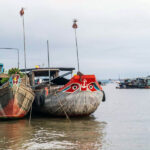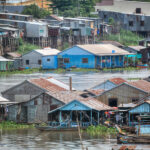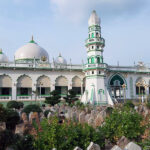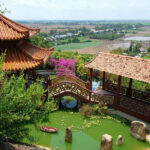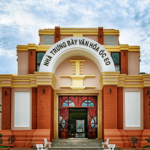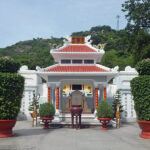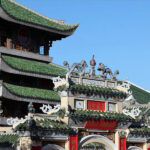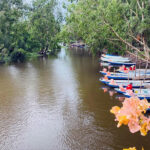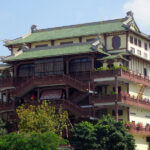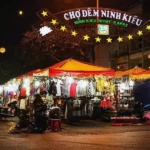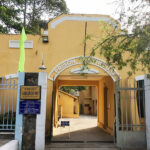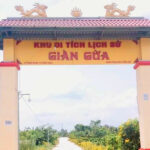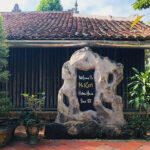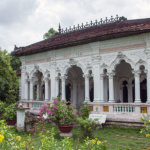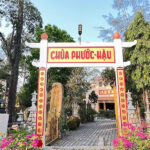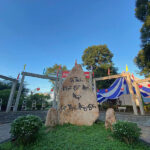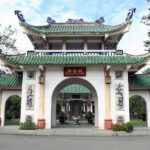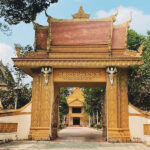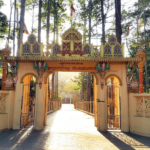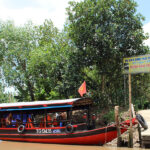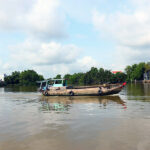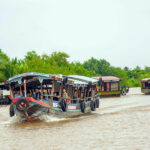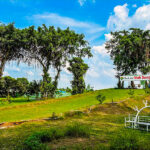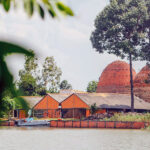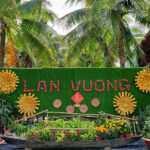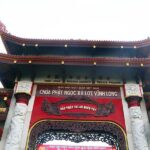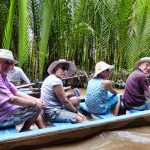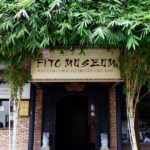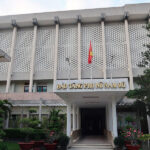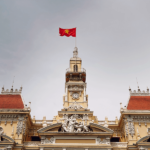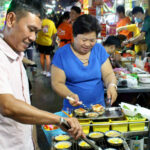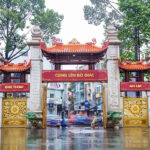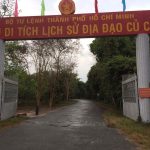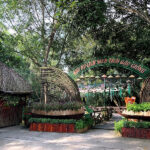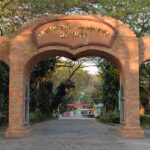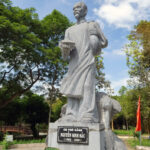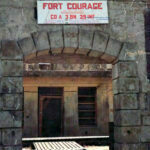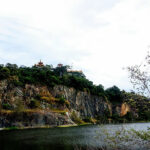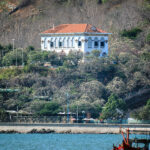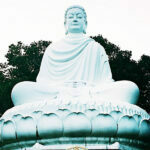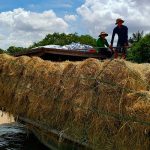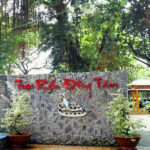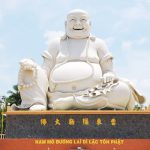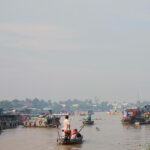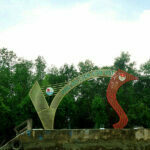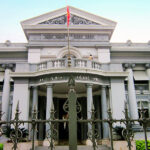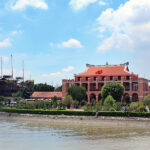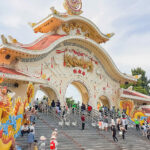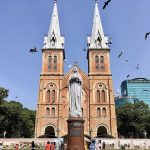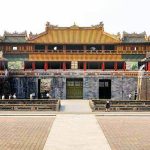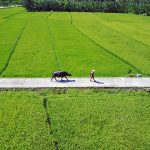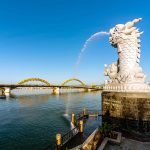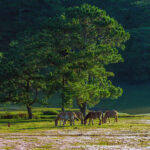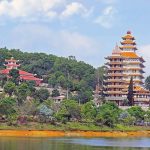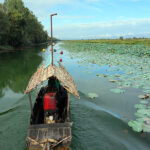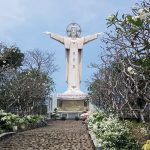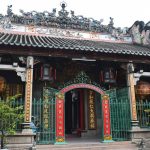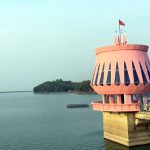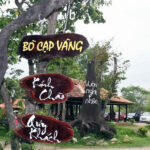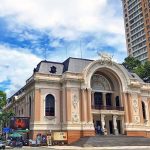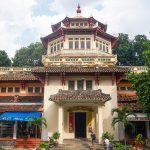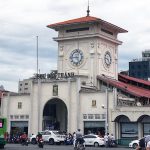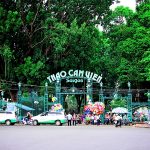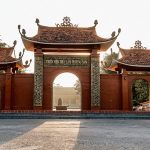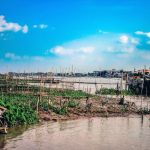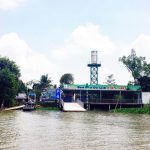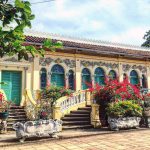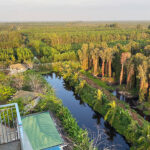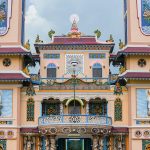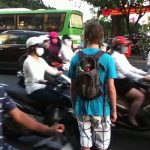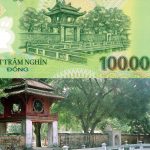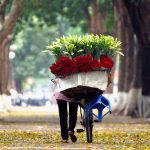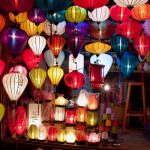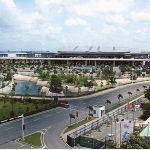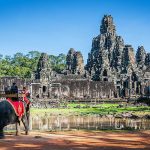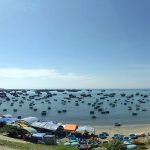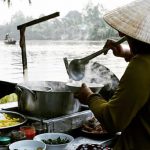Coming to Lai Chau means coming to the majestic mountain peaks, where more than 20 ethnic groups live, so there are many cultural differences here. There, you will see yourself with the vastness of nature, majestic with mountain peaks and floating with white clouds.
Table of Contents
General information about Lai Chau
Lai Chau is located in the northwest, bordering Lao Cai, Son La, Dien Bien and Yunnan province of China. Lai Chau has 20 ethnic groups, each with its own unique features in traditional cultural life. The highland market is where those unique cultural features are clearly expressed.
What’s the best time to visit Lai Chau?
Lai Chau has a humid subtropical climate. The average annual temperature is about 21°C-23°C divided into two seasons according to humidity: rainy season and dry season, divided into four seasons according to temperature: spring, summer, autumn, winter.

rice fields in Lai Chau.
The province has the characteristics of the Northwest climate and culture, so the right time to travel to Lai Chau is September-October when the rice fields are golden, then spring, January-March, with all kinds of flowers such as peach, ban blooming brilliantly and the flooding season in April-May. In the summer, from June to August, when it rains a lot, you should avoid traveling to Lai Chau.
How to get there?
From Hanoi to Lai Chau, travel along the Hanoi – Lao Cai Expressway (CT05), then onto QL4D from Lao Cai city. Total travel time is about 8 hours.
Lai Chau does not have an airport. Visitors from the southern provinces go to the nearest airport, Dien Bien, about 190 km away, then travel by road for about 4 hours.
Vehicles depart from Giap Bat or My Dinh bus stations (Hanoi) to Lai Chau, ticket prices range from 250,000 VND to 450,000 VND, depending on the bus company and the type of sleeper or seat.
Accommodations in Lai Chau
Lai Chau has many hotels in the city center, including large hotels such as Hoang Nham Luxury Hotel and Muong Thanh Lai Chau Hotel, priced from 800,000 VND to 1.2 million VND; Minh Son Hotel, Putaleng Hotel, Binh Long Hotel, priced from 200,000 VND to 400,000 VND.

A homestay in Sin Suoi Ho village, Lai Chau.
In Sin Suoi Ho village, there are currently many clean and beautiful homestays with good services for tourists such as Sin Suoi Ho Hideaway Homestay Lai Chau, Bui Sanh homestay, Chu Vang homestay, Sung A Sung, Chinh Ly homestay. Room rates range from VND300,000 to about VND800,000 per night.
Tourist attractions in Lai Chau
O Quy Ho Pass
O Quy Ho Pass (also known as May Pass or Hoang Lien Pass) is one of the four great mountain passes in Vietnam, 2,350 m high. O Quy Ho has a winding road on National Highway 4D, of which two-thirds are in Tam Duong, Lai Chau and the remaining 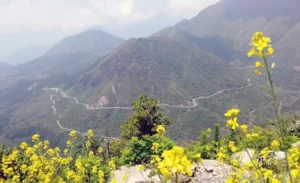 one-third is in Sa Pa, Lao Cai Province. This is the longest pass in the Northwest mountainous region, nearly 50 km. In 2015, this place was recognized as a National Scenic Spot.
one-third is in Sa Pa, Lao Cai Province. This is the longest pass in the Northwest mountainous region, nearly 50 km. In 2015, this place was recognized as a National Scenic Spot.
A few kilometers past the gate of Hoang Lien National Park is the peak of O Quy Ho Pass, which is also the boundary point between the two northern mountainous provinces of Lao Cai and Lai Chau, winding around the Hoang Lien mountain range, where there is the windy Fansipan peak – the roof of Indochina at a height of 3,414 m. O Quy Ho Pass has long been famous not only for its important traffic location but also for its majestic beauty in the Northwest.
Sin Suoi Ho village
 Sin Suoi Ho village is located about 30 km from Lai Chau center. The village is located at an altitude of nearly 1,500 m above sea level, at the foot of Son Bac May mountain. In 2015, Sin Suoi Ho was recognized as a community tourism village, attracting visitors thanks to its open, clean space and new tourism methods. In the village, there are many signs and garbage collection points, helping the space to always be clean and tidy. The village is mainly inhabited by Mong people, the people here do not drink alcohol, smoke, or gamble. There are enough homestays and services for tourists.
Sin Suoi Ho village is located about 30 km from Lai Chau center. The village is located at an altitude of nearly 1,500 m above sea level, at the foot of Son Bac May mountain. In 2015, Sin Suoi Ho was recognized as a community tourism village, attracting visitors thanks to its open, clean space and new tourism methods. In the village, there are many signs and garbage collection points, helping the space to always be clean and tidy. The village is mainly inhabited by Mong people, the people here do not drink alcohol, smoke, or gamble. There are enough homestays and services for tourists.
 Sin Ho village is located between the rocky mountains, the vast primeval forests, the sea of clouds, here with winding terraced fields, villages lying faintly on the mountainside …
Sin Ho village is located between the rocky mountains, the vast primeval forests, the sea of clouds, here with winding terraced fields, villages lying faintly on the mountainside …
Visiting Sin Ho village, visitors will have the opportunity to admire the majestic nature of the mountains and forests, to explore the unique customs and practices in the daily life of the local people and especially to enjoy dishes with the rich flavor of the mountains and forests such as buffalo meat wrapped in betel leaves, steamed goat, local pigs, stream fish, thang co, sticky rice …
Mountain peaks
The climbing season is usually from about October to April of the following year when the weather is dry, you can hunt clouds and admire many blooming flowers such as rhododendrons, chi pau, wild peach. When climbing the mountain, visitors should buy a package tour or hire a local porter to avoid getting lost.
Bach Moc Luong Tu Peak
Bach Moc Luong Tu Peak is located in Sin Sui Ho commune. With an altitude of 3,045m above sea level, Bach Moc Luong Tu is one of the 5 highest mountains in Vietnam and Southeast Asia in Lai Chau province.
Conquering Bach Moc Luong Tu is always a challenge but also full of attraction for backpackers. Although not the highest mountain peak, Bach Moc Luong Tu is known as the mountain peak with the most beautiful landscape and the most interesting exploration route.
Pu Ta Leng Peak
Located about 20 km northeast of Lai Chau center, Pu Ta Leng has an altitude of 3049 m. If Fansipan is considered the “roof of Indochina”, Pu Ta Leng is the second roof that adventurers or young people who love challenges want to conquer even once. Every 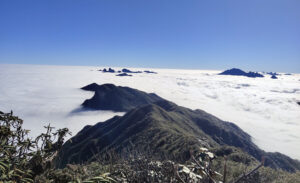 year, from October to March of the following year is the best time for visitors to choose to conquer Pu Ta Leng peak because of the beauty of nature and wild flowers, especially rhododendrons blooming from all over the mountainside to the top.
year, from October to March of the following year is the best time for visitors to choose to conquer Pu Ta Leng peak because of the beauty of nature and wild flowers, especially rhododendrons blooming from all over the mountainside to the top.
Conquering Pu Ta Leng peak, visitors will have to overcome primeval forests, waterfalls, streams or rich vegetation… and then when reaching the top, they will see oases hidden in the ocean of clouds at an altitude of 3,049m. Layers of white clouds between the blue of the sky and the green of the mountains and forests here are like a wonderful picture.
Pu Si Lung Peak
As the most pristine, mysterious and charming mountain in Vietnam, the legendary Pu Si Lung peak located on the border between Vietnam and China in Bum Nua commune, Lai Chau province with an altitude of 3083m, known as the roof of the border, is always a dream destination for adventurers.
Nature and wildlife areas
Muong Te Nature Reserve
 Muong Te Nature Reserve is located in Muong Te district, a mountainous area ranging from 1,000 to 2,820 meters above sea level. This area has a diverse terrain with mountain ranges, valleys, rivers and waterfalls. This is home to many ethnic minority communities but is also home to many rare flora and fauna, especially forest ecosystems. There are 57 rare plant species listed in the Vietnam Red Book and 7 species in the world Red Book, most of which are rare medicinal species, 22 species are narrowly endemic to the Northwest region.
Muong Te Nature Reserve is located in Muong Te district, a mountainous area ranging from 1,000 to 2,820 meters above sea level. This area has a diverse terrain with mountain ranges, valleys, rivers and waterfalls. This is home to many ethnic minority communities but is also home to many rare flora and fauna, especially forest ecosystems. There are 57 rare plant species listed in the Vietnam Red Book and 7 species in the world Red Book, most of which are rare medicinal species, 22 species are narrowly endemic to the Northwest region.
The reserve is open all days of the week and is free. This is also the starting point for tourists trekking Pu Si Lung peak.
Muong Than Field
 Muong Than is one of the four largest fields in the Northwest region (Muong Thanh – Muong Lo – Muong Tac) located in Muong Than commune, at an altitude of about 600m above sea level. Muong Than, known as a “precious gem”, is not only famous for its majestic natural scenery but also for the simple beauty of rural life.
Muong Than is one of the four largest fields in the Northwest region (Muong Thanh – Muong Lo – Muong Tac) located in Muong Than commune, at an altitude of about 600m above sea level. Muong Than, known as a “precious gem”, is not only famous for its majestic natural scenery but also for the simple beauty of rural life.
The field not only creates a poetic beauty in the middle of the majestic mountains and forests but also produces many famous local products such as baby corn, Hoang Long sweet potatoes, sen cu rice, and eight-grain rice.
Pu Sam Cap Cave Complex
 About 6 km from Lai Chau city, on TL129 connecting Lai Chau with Sin Ho, Pu Sam Cap cave complex is considered “the first cave in the Northwest”. This complex belongs to the Pu Sam Cap range system with an altitude of about 1,300 m to 1,700 m above sea level. This is a limestone mountain range formed from the tectonic era, with gentle slopes to the south and steep slopes, divided to the north. With more than 10 large and small caves, including two large caves, which are also two places welcoming tourists (Thien Mon and Thien Duong caves).
About 6 km from Lai Chau city, on TL129 connecting Lai Chau with Sin Ho, Pu Sam Cap cave complex is considered “the first cave in the Northwest”. This complex belongs to the Pu Sam Cap range system with an altitude of about 1,300 m to 1,700 m above sea level. This is a limestone mountain range formed from the tectonic era, with gentle slopes to the south and steep slopes, divided to the north. With more than 10 large and small caves, including two large caves, which are also two places welcoming tourists (Thien Mon and Thien Duong caves).
The road to Pu Sam Cap is winding and difficult to travel, visitors should choose vehicles that can travel long distances and prepare suitable clothes.
Tien Son Cave
Tien Son Cave is located in Binh Lu Commune, more than 40 km from Sa Pa Town. This is one of the beautiful caves in the Northwest region that still retains its wild beauty. Located at an altitude of 750 – 950 meters above sea level, the cave has an east  door 15 m wide and 10 m high. Inside, the bottom is quite flat, the ceiling is high, many stalactites hang down, stalagmites “grow” from the bottom up, creating strange shapes.
door 15 m wide and 10 m high. Inside, the bottom is quite flat, the ceiling is high, many stalactites hang down, stalagmites “grow” from the bottom up, creating strange shapes.
The cave consists of 49 consecutive arches running across two mountain slopes, the deeper the arches, the larger they become. Each arch is given a sacred name by the people around the area such as Mau Au Co, Lac Long Quan, Ba Chua Kho… In the cave, there is a clear stream flowing through the arches that never runs out of water all year round. There is an electric lighting system along the path to serve visitors. Some sections are quite slippery, the path is narrow, visitors must bring a flashlight.
Specialties of Lai Chau
In addition to many typical dishes of the Northern mountainous region such as smoked meat, khau nhuc, pa pinh top, thang co, Lai Chau also has many delicious typical dishes.
“Carried-under-arm” pig
 Carried-under-arm pig is a specialty of the Northwest highlands. This breed of pig is let loose in the forest by ethnic people, finding its own food, so each pig only weighs about 10 – 15 kg. Because they eat leaves and vegetables in the forest, their meat is very firm and delicious.
Carried-under-arm pig is a specialty of the Northwest highlands. This breed of pig is let loose in the forest by ethnic people, finding its own food, so each pig only weighs about 10 – 15 kg. Because they eat leaves and vegetables in the forest, their meat is very firm and delicious.
Carried-under-arm pig let is processed into many delicious dishes such as steamed, grilled, cooked with fake dog meat, stewed, cooked in soup… Every dish is marinated and cooked with leaves and seeds with the flavor of the mountains and forests, bringing a strange feeling, especially for visitors enjoying it for the first time.
Ash-buried goby
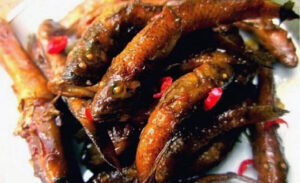 If you have the opportunity to come to Phong Tho area, do not miss the ash-buried goby – a specialty of the Thai ethnic group. Gobies are available in rivers and streams. After being caught, they are cleaned and marinated with chopped spices such as lemongrass, chili, ginger, pepper, mac khen, basil… Then marinate for about 15 – 30 minutes, the fish will be wrapped in dong leaves and buried in hot ash. After about 30 minutes, they will be flipped over once, and the fish will be cooked several times. When cooked, the fish has a light aroma and a rich taste.
If you have the opportunity to come to Phong Tho area, do not miss the ash-buried goby – a specialty of the Thai ethnic group. Gobies are available in rivers and streams. After being caught, they are cleaned and marinated with chopped spices such as lemongrass, chili, ginger, pepper, mac khen, basil… Then marinate for about 15 – 30 minutes, the fish will be wrapped in dong leaves and buried in hot ash. After about 30 minutes, they will be flipped over once, and the fish will be cooked several times. When cooked, the fish has a light aroma and a rich taste.
Pa Pinh Top
 Pa Pinh Top (grilled folded fish) is a rather elaborate dish, often used in meals when the family has important guests. People choose fresh, whole carp to grill.
Pa Pinh Top (grilled folded fish) is a rather elaborate dish, often used in meals when the family has important guests. People choose fresh, whole carp to grill.
After rubbing a little salt and dried chili powder to remove the fishy smell, the cook marinates the fish with herbs such as mac khen (a type of wild pepper), ginger, garlic, lemongrass, onions, wild herbs, chili powder… chopped, mixed together and rubbed evenly on the fish, and stuffed into the fish’s belly. Pa pinh top is grilled over charcoal. When grilling, you must use bamboo sticks to clamp the fish so that the flavor is more intense when the spices penetrate deep into each fiber of the meat and release the aroma. When grilled, the inside of the fish is fragrant, sweet, and dry.
Purple sticky rice
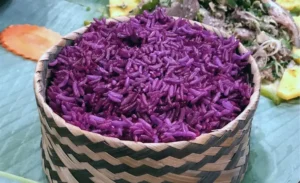 A traditional dish of the ethnic people in the Lai Chau highlands, purple sticky rice shows the skillful hands of women in the way of processing. Upland sticky rice is soaked thoroughly for 6-8 hours before being steamed.
A traditional dish of the ethnic people in the Lai Chau highlands, purple sticky rice shows the skillful hands of women in the way of processing. Upland sticky rice is soaked thoroughly for 6-8 hours before being steamed.
The characteristic and attractive purple color of the sticky rice is dyed with a plant called “khau cam” (a type of forest leaf). Khau cam is broken off the branches, leaves are washed, then boiled and soaked with rice. When cooked, the sticky rice is fragrant, bright purple, the grains are soft and sticky.
Grilled rock moss
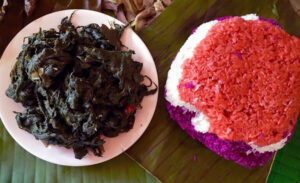 Rock moss is a clean vegetable of the Lai Chau people. It takes a lot of effort to get them from the rocks by the stream to make delicious dishes for the family such as soup, grilled, stir-fried…
Rock moss is a clean vegetable of the Lai Chau people. It takes a lot of effort to get them from the rocks by the stream to make delicious dishes for the family such as soup, grilled, stir-fried…
When preparing moss, the maker needs to scoop the moss into a basket, rinse it with clean water to remove sand and dirt, put it on a large rock or cutting board and use a large piece of wood to pound it, do this several times before it can be cooked.
Vegetable fern salad
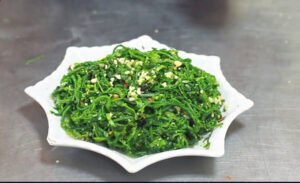 Vegetable fern grows everywhere in home gardens, pond banks, and stream banks, so it is often present in the daily meals of Thai people in Lai Chau.
Vegetable fern grows everywhere in home gardens, pond banks, and stream banks, so it is often present in the daily meals of Thai people in Lai Chau.
The way to make this dish is also quite simple: choose young shoots, wash them, dry them in the sun, then steam them, then mix them with herbs, chili, ginger, garlic, MSG, salt and squeeze in a little fresh lemon. The sweet, soft, crunchy taste mixed with a sour taste is the characteristic flavor of vegetable fern salad.
Source: collected by An
Follow us for the best deal with Vietnam package tours and visa services!

